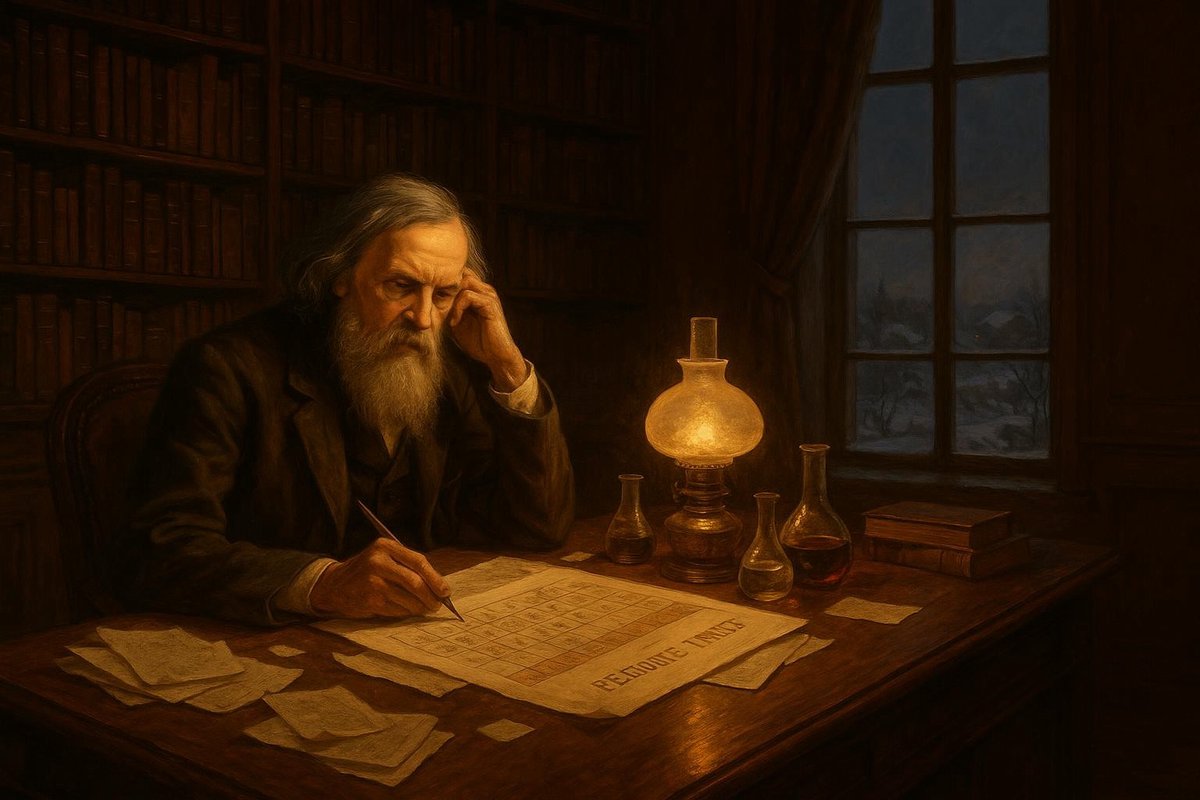
A Simple Idea That Changed Everything
In the mid-19th century, a Russian chemist named Dmitri Mendeleev found himself on a train journey with an idea that would forever change the world. Legend has it that while he was traveling across the vast Russian landscape, he began to envision a system to organize chemical elements. This was not just a scientific breakthrough but a paradigm shift that would orchestrate the symphony of scientific understanding in chemistry.
One might wonder, what did chemists know before this revolution? Before Mendeleev’s insight, the chemical community struggled with chaos. Elements were recognized, yes, but there was no coherent method to categorize them. The absence of a structured system often left scientists in the dark, searching for a glimpse of order amid the elemental chaos.
- Prior to the Periodic Table, elements were known but not systematically organized.
- The chaos in classification led to challenges in scientific development.
- Mendeleev’s vision brought a new order, harmonizing these previously discordant elements.
As the story unfolds, one might wonder how such an idea could transform not only the field of chemistry but ignite the collective imagination of generations to come.
The Pioneers of Elemental Order
The formation of the Periodic Table was not the work of just one man. It was an orchestra of minds with Mendeleev at the helm, but other players contributed significant notes. Before Mendeleev, John Newlands proposed the Law of Octaves, suggesting that every eighth element shared similarities. Though mocked for his rudimentary analogy to music, Newlands’ idea echoed the need for order.
Around the same time, Lothar Meyer independently arrived at a similar arrangement of elements. His and Mendeleev’s tables were almost identical, yet it was Mendeleev’s predictive brilliance that made his version more enduring. He left gaps for elements yet to be discovered, trusting that nature abides by laws yet unseen.
- Mendeleev, Newlands, and Meyer played crucial roles in developing the Periodic Table.
- Mendeleev’s foresight in leaving gaps for undiscovered elements set his work apart.
- Collaborative efforts and rivalries fueled the development of this groundbreaking scientific tool.
Their collective efforts laid the foundation for a concept that would transcend the mere categorization of elements and venture into the realm of predictive science.
A Turning Point in Chemical History
The turning point for Mendeleev’s periodic system came when his predictions began to materialize. He had boldly left spaces in his table with prophetic predictions about the properties of elements yet to be discovered. When gallium, scandium, and germanium were later discovered and matched Mendeleev’s descriptions, the scientific world took notice.
Interestingly, this was more than just a validation. It was a demonstration of the power of scientific foresight. The Periodic Table became not just a tool of organization but a beacon of discovery, guiding scientists to explore what lay beyond the known.
- Predictive power of the Periodic Table was demonstrated with new element discoveries.
- Gallium, scandium, and germanium matched Mendeleev’s predictions, validating his vision.
- The Periodic Table became a guide for future scientific exploration.
No wonder the table became an oracle for chemists and a testament to the potential of scientific methodology. It laid the groundwork for future breakthroughs in atomic theory and quantum mechanics.
The Impact That Reshaped the World
From classrooms to laboratories, the Periodic Table’s influence permeates diverse realms. It is not just a chart but a recurring motif, a symbol of human curiosity and a testament to the power of organization in understanding complexity.
Beyond the scientific community, it sparked imaginations in literature and art, inspiring works that depicted the world as a finely tuned symphony of elements. Its structure has even been likened to a map of the universe, each element a star in the vast expanse of scientific discovery.
- The Periodic Table is more than a scientific tool; it is an educational cornerstone.
- Its influence extends into literature and art, symbolizing human curiosity.
- It inspires a view of the universe as interconnected and ordered.
The ripple effect of this discovery shows no sign of slowing. As time goes on, the Periodic Table remains a reminder of how organized thought can unlock the mysteries of nature and inspire boundless creativity.
Fuel Someone Else’s Curiosity
Discovering the story behind the Periodic Table is more than just understanding chemistry; it is about appreciating the human endeavor to make sense of our world. Share this journey with friends and family, spark conversations, and inspire others to look at science not just as a subject but as an ever-evolving narrative of discovery. Who knows, you might ignite the curiosity of a future scientist!

Leave a Reply